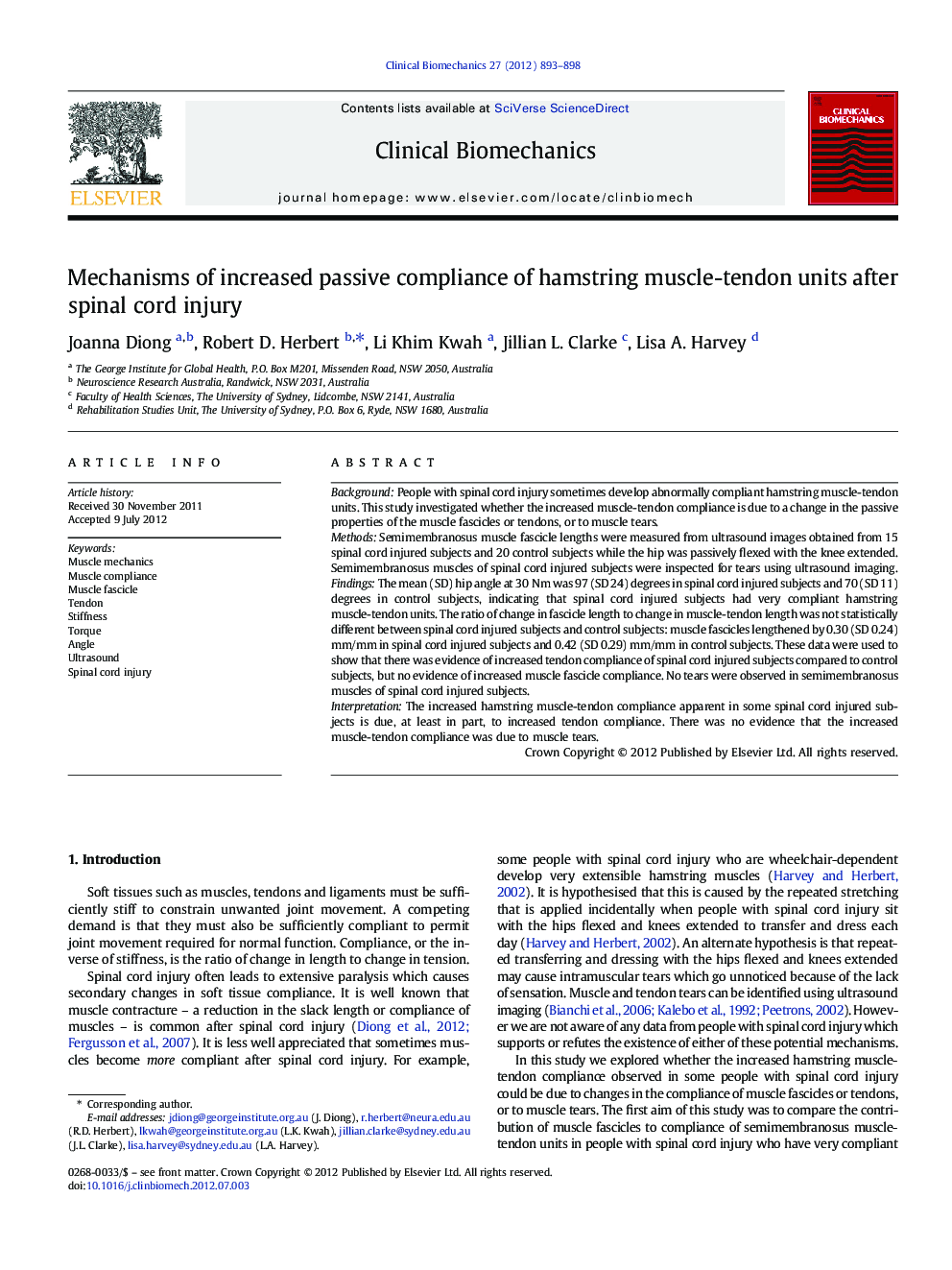| کد مقاله | کد نشریه | سال انتشار | مقاله انگلیسی | نسخه تمام متن |
|---|---|---|---|---|
| 6204979 | 1264934 | 2012 | 6 صفحه PDF | دانلود رایگان |

BackgroundPeople with spinal cord injury sometimes develop abnormally compliant hamstring muscle-tendon units. This study investigated whether the increased muscle-tendon compliance is due to a change in the passive properties of the muscle fascicles or tendons, or to muscle tears.MethodsSemimembranosus muscle fascicle lengths were measured from ultrasound images obtained from 15 spinal cord injured subjects and 20 control subjects while the hip was passively flexed with the knee extended. Semimembranosus muscles of spinal cord injured subjects were inspected for tears using ultrasound imaging.FindingsThe mean (SD) hip angle at 30Â Nm was 97 (SD 24) degrees in spinal cord injured subjects and 70 (SD 11) degrees in control subjects, indicating that spinal cord injured subjects had very compliant hamstring muscle-tendon units. The ratio of change in fascicle length to change in muscle-tendon length was not statistically different between spinal cord injured subjects and control subjects: muscle fascicles lengthened by 0.30 (SD 0.24) mm/mm in spinal cord injured subjects and 0.42 (SD 0.29) mm/mm in control subjects. These data were used to show that there was evidence of increased tendon compliance of spinal cord injured subjects compared to control subjects, but no evidence of increased muscle fascicle compliance. No tears were observed in semimembranosus muscles of spinal cord injured subjects.InterpretationThe increased hamstring muscle-tendon compliance apparent in some spinal cord injured subjects is due, at least in part, to increased tendon compliance. There was no evidence that the increased muscle-tendon compliance was due to muscle tears.
Journal: Clinical Biomechanics - Volume 27, Issue 9, November 2012, Pages 893-898